Contents:
- Characteristics of harvesting
- Chemical composition of plant raw materials
- Application of
- Useful properties and treated action
- Contraindications
Inhabitant edible honeysuckle is very popular among owners of household plots. Every year gardeners gather from the bushes a rich harvest of dark blue tart berries, of which jams are cooked, jam. From the fruits of honeysuckle, they prepare medicinal infusions and decoctions for the treatment of colds and gastritis. But the leaves of a perennial plant possess no less useful properties. They contain a large number of biologically active substances that help a person get rid of trophic ulcers, dermatitis, conjunctivitis. Useful properties of the leaves of honeysuckle and contraindications determine the chemical composition of the leaves. Before starting therapy, you should consult your doctor about the safety of this traditional medicine technique.
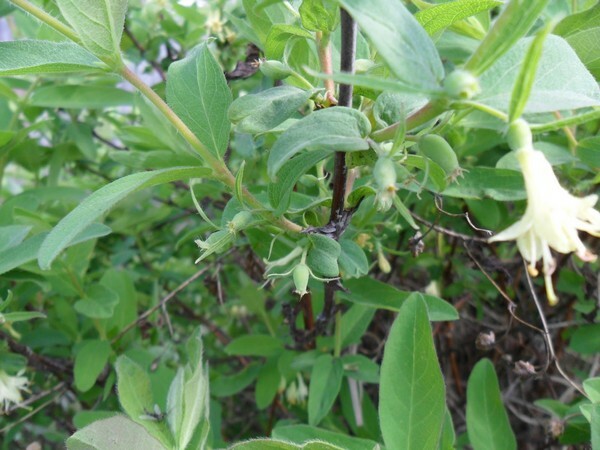
Characteristic features of
collection and harvesting Honeysuckle grows in regions with severe climate - Eastern Siberia and the Far East. Despite the late coming in these latitudes spring, the bush blooms and fructifies very early. The first buds are formed in the plant already in the middle of spring, and at the beginning of summer a lot of berries are formed on honeysuckle. This period is the most favorable for the preparation of leaves.
It's interesting: Landscape designers plant shrubs to decorate flower gardens, parks and squares. Honeysuckle is very unpretentious, does not require frequent watering and fertilizing. It is enough to cut the bush a couple of times during the summer so that the lawn in front of the house or in the park looks neat and well-groomed.
In April, honeysuckle is covered with oblong-lanceolate leaves with sharp peaks. Their size may vary depending on the place of growth, but they rarely exceed 7 cm in length. Disc-shaped stipules are attached to the intergrown short petioles. When to collect leaves of honeysuckle for treatment:
- during budding and flowering;
- before fruit formation.
As a medicinal raw material in folk medicine, only young leaves containing a high concentration of biologically active substances are used. They are easy to distinguish from old ones due to the presence of many soft villi on the plates. Leaves can be cut with garden scissors, pruners or simply cut off from shoots. Then the plant raw materials should be spread in a layer of 1 cm in a dark and dry place. During drying, the leaves should be mixed to prevent the development of putrefaction. After 10-14 days, you can start treatment.
Chemical composition of plant raw materials
In folk medicine, practically all parts of the plant are used - fruits, young shoots, leaves, bark and roots. They have a similar chemical composition, only in berries is also a large number of simple sugars. If you chew a little fresh leaf, you can feel a light sourness. This is due to the presence of organic acids - apple, oxalic, lemon. A marked bitterness of plant raw materials is given by glycosides and tannins. Also leaves of honeysuckle contain the following biologically active compounds:
- pectins;
- flavonoids;
- phytoncides.
Chemical compounds exhibit antioxidant efficacy. Flavonoids and phytoncides do not allow free radicals to attack cells of the human body, prevent premature aging of tissues. Increase this effect of trace elements from the chemical composition of leaves:
- manganese;
- zinc;
- phosphorus;
- molybdenum;
- potassium;
- magnesium;
- calcium.
Vegetable raw materials contain a rare microelement of selenium, which has the properties of an adaptogen. The more it is in the body, the better a person adapts to the adverse effects of internal and external factors. Leaves of honeysuckle are actively used by folk healers in the treatment of inflammatory eye pathologies due to the presence of fat-soluble vitamin A, or carotene.
Recommendation: Tea from the leaves of honeysuckle is used in the therapy of bacterial and viral respiratory infections due to the high content of vitamin C. Especially a lot of ascorbic acid in the plant growing in the northern latitudes of our country. Biologically active substance accumulates in the bush for successful flowering and fruiting in conditions of short summer.
The leaf composition includes almost the entire group of B vitamins, even the B9, or folic acid, that is not widely distributed in nature. It takes a direct part in the functioning of the nervous, immune and cardiovascular systems of the human body. The amount of all biologically active substances can vary depending on the region of growth of honeysuckle, but most of them are contained in the leaves of wild shrubs.
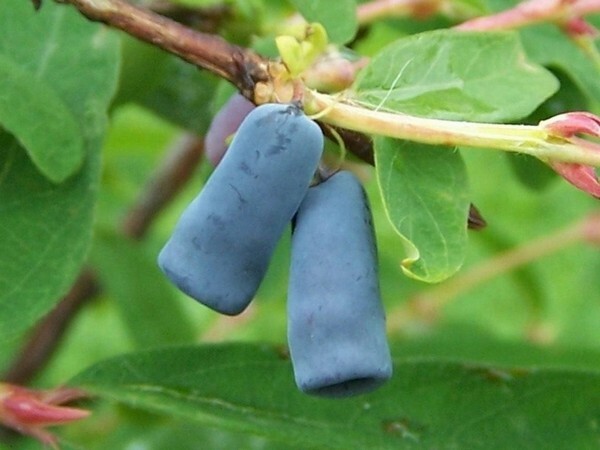
Use of
Infusions and decoctions of honeysuckle leaves are used not only for internal use. Traditional healers are advised to apply them to the damaged skin for its rapid regeneration. The use of this technique stimulates the healing of trophic ulcers, eczema, burns, including purulent. Good decoction of the leaves with hives and atopic dermatitis, provoked by allergic agents. The use of tea from the leaves of honeysuckle is also evident in the therapy of such chronic pathologies:
- excess gas formation;
- glomerulonephritis, cystitis, pyelonephritis;
- diarrhea;
- osteochondrosis;
- gout;
- arthritis and arthrosis;
- endocrine disorders.
Tea from the leaves of honeysuckle is used to treat hypertension. Due to the high content of potassium urination increases, contributing to a gradual decrease in pressure.
Useful properties and the treated effect
The anti-inflammatory properties of decoctions and teas from honeysuckle leaves allow them to be used in the therapy of diseases caused by the penetration of viruses, bacteria, protozoa, fungi into the human body. Thanks to the presence of phytoncides and ethers, medicinal drinks restrain the growth and active reproduction of pathogenic pathogens. Regular use of teas and decoctions allows you to quickly stop the inflammatory process and reduce the number of formed infectious foci. For the leaves of honeysuckle, the following medicinal properties are characteristic:
- diuretic;
- astringent;
- is decongestant;
- antimycotic;
- is antimicrobial;
- is antispasmodic;
- toning.
Bioflavonoids from the leaves of honeysuckle can improve the condition of small and large blood vessels. The result of this effect is the normalization of blood circulation in damaged tissues and their accelerated regeneration. A high concentration of vitamins and microelements in the plant is used to replenish the reserves of biologically active substances in the body of adults and children. This is especially true for people undergoing rehabilitation after surgery or chemotherapy.
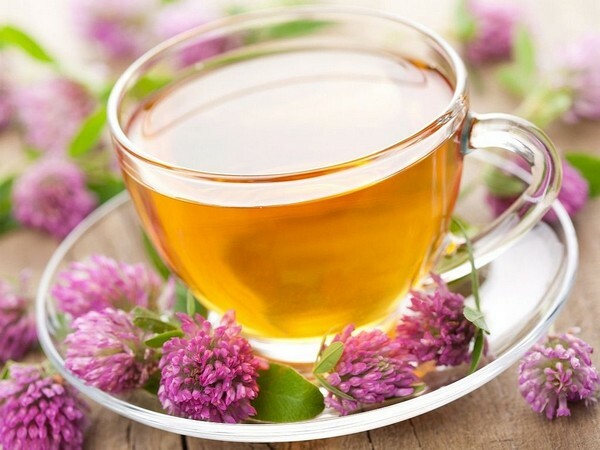
For children
The high concentration of vitamins and trace elements in honeysuckle leaves allows using them to strengthen the immunity of children. The course reception of medicinal tea helps to increase the body's resistance to infectious agents. It is advisable to give children healthful drinks during the off-season. At this time, viruses and pathogens are often transmitted by airborne droplets. Tea from the leaves of honeysuckle will be an excellent preventative against colds. It is also used to treat respiratory pathologies in children:
- bronchitis;
- sore throats;
- sinusitis;
- tracheitis;
- bronchiolitis.
Warning: Leaves of honeysuckle contain glycosides, therefore this kind of plant raw material can be used only in therapy of children over 12 years old after consulting with a pediatrician. The doctor will determine the daily and one-off dosages, as well as the duration of treatment in accordance with the weight of the child and the general state of his health.
Leaf tea can be used only after the main treatment with antibiotics or antiviral drugs. This dosage form of honeysuckle has the ability to prolong the action of medications, which is not always advisable. Prepare tea from the leaves of honeysuckle as follows:
- In the infusion pot, pour in 0.5 teaspoons of dry vegetable raw materials or put two large leaves.
- Pour 200 ml of hot( not boiling!) Water and leave for half an hour.
- Strain, add flower honey or thick jam, if desired, and drink sugary tea 0.5 grams three times a day after meals.
Healing infusion helps to sanitize the upper respiratory tract, remove infectious agents and toxic products of their vital functions. Under the influence of phytoncides and organic acids, the viscosity of thick sputum decreases, and it is easily evacuated from the bronchi and pharynx with each cough.
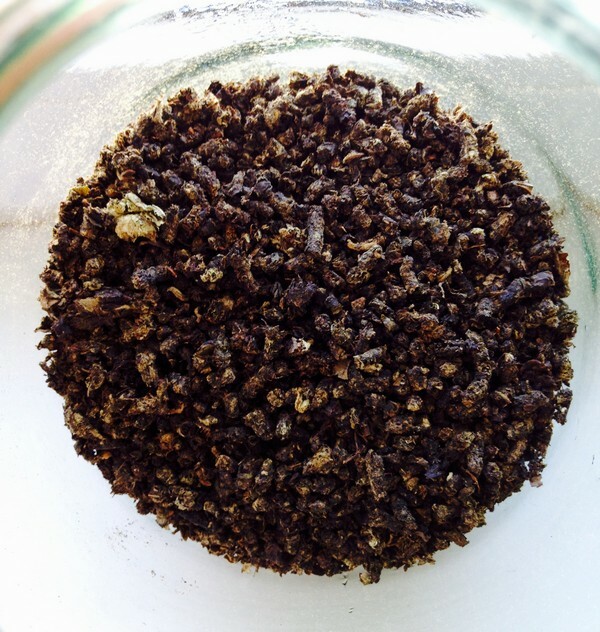
For women
For the fair sex, fermented tea from the leaves of honeysuckle is especially useful. It contains the maximum concentration of microelements of potassium and magnesium, which are necessary for women during the period of hormonal background disorder. Healing drink is used to eliminate the symptoms of menopause - hot flashes, dizziness, psychoemotional instability. It is used for heavy menstruation, complicated by severe pain in the lower abdomen. Prepare the tea for this recipe:
- Freshly picked leaves of honeysuckle slightly to mash and leave in a dry warm place for 5-6 hours.
- Grind vegetable raw materials with a meat grinder, mix well the resulting thick mass and lay a thin layer on a baking tray.
- Dry in the oven at 90-100 ° C, stirring constantly.
- Fermentation is carried out until the moisture evaporates from the plant material.
- Cool and pour into a glass container or linen bag.
For the preparation of useful tea from the leaves of honeysuckle, you need to pour a teaspoon of aromatic tea leaves into a ceramic teapot and fill with a glass of hot water. Infuse about 20 minutes, drink a glass 2-3 times a day after each meal.
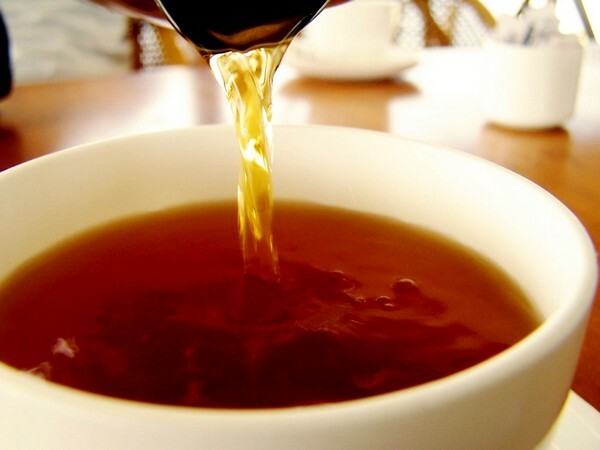
For men
In folk medicine, tea from young leaves of honeysuckle is used to treat prostatitis and benign prostatic hyperplasia. Due to the pronounced antibacterial action of plant raw materials, the inflammatory process is reduced and the severity of the pain syndrome decreases. Regular use of broth from the leaves of honeysuckle helps to normalize urination and excretion of urine infectious pathogens. How to prepare a healthy decoction:
- In an enameled container, pour a tablespoon of dried leaves and pour 300 ml of hot water.
- Bring to a boil and simmer for 10 minutes.
- Cool, strain, add to taste thick honey.
Folk healers recommend taking half a cup of sweet-scented broth twice a day after meals. Such a dosage form of honeysuckle is used during rehabilitation after antibiotic therapy.
Tip: Decoction from the leaves of honeysuckle replenishes the supply of micronutrients in the body, especially zinc. This positively affects sexual activity: improves potency, increases libido and the duration of sexual intercourse.
Contraindications
Tea and decoction from any part of the plant is capable of provoking the development of an allergic reaction in people who have individual sensitivity to honeysuckle. Relative contraindications are the following pathologies:
- acute and chronic renal failure;
- diseases of the liver and pancreas;
- arterial hypotension.
Leaves of honeysuckle can not be used to treat pregnant women and breastfeeding women. Before collecting plant raw materials, you should make sure that the shrubbery does not belong to the poisonous species, which can cause severe intoxication.
